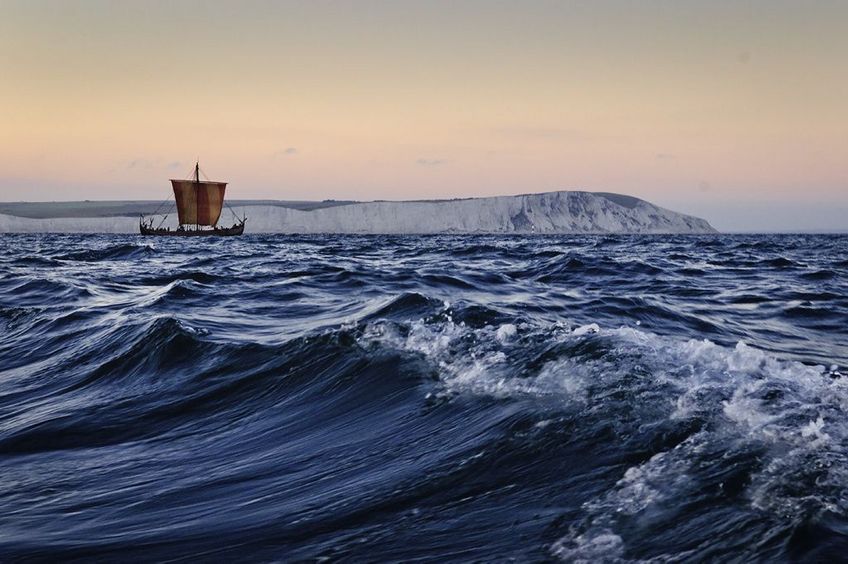
The Vikings in the West
AD 793 heralded the start of many years of plundering attacks in England. This attack has also traditionally been nominated as the start of the Viking Age because from here is the oldest precise written information about a plundering expedition (in The Anglo-Saxon Chronicle). It was also around AD 800 that the aggressive Viking expeditions and the expansion, which are so characteristic of Viking times, took off in Western Europe. For the next 300 years, Scandinavian Vikings formed a large part of English history - as plunderers, merchants, mercenaries, conquerors, settlers and kings.
In England, the Vikings’ influence was both direct and indirect. Indirect, because many of the fortifications that the Anglo-Saxons had constructed or rebuilt in previously Roman towns as a defence against the Vikings, later developed into towns. The Vikings themselves conquered already established centres of power. Many places already had a church, a chieftain’s farmstead and were fortified, but the arrival of the conquerors resulted in increased turnover and gave several places a push in the direction of proper urban development with commerce, local administration, defence and the Church. The best known of these are the five castles: Lincoln, Nottingham, Leicester, Derby and Stamford, from where the Vikings controlled parts of Central England. In some places, actual urban formation occurred later, when the English took over power, but excavations in towns such as York and Lincoln have revealed that many important urban structures were established while the Vikings were in residence. Numerous place names in Northeastern England today bear witness to the former presence of the Vikings.
Scotland during the Viking Age was not the Scotland we know today. It was a land with many kings, varied geography and was inhabited by many tribes with their own customs and cultures. Vikings Scotland began with the first Viking warriors trespassing on Scottish land shortly before the year 800.
When the Vikings came to Ireland they were met - and tempted - by the wealth of the early Christian Church. While being described as fierce marauders in historical sources, they also settled in Ireland and founded the most important towns on the island.
When the Vikings arrived in Ireland in 795 AD they encountered a country whose inhabitants had been Christian for over three hundred and fifty years and a country with many by wealthy monasteries. These monastic sites, with their gold and silver, were target of Viking attacks. In the absence of towns, they were also the main centres of population, and therefore a good source of slaves.
From the AD 840s, the Vikings began to over-winter and created fortified bases called, from which they later became engaged in trade, collected taxes and participated in Ireland’s internal conflicts as mercenaries. Best known of these is Dublin, but also towns such as Wicklow, Arklow, Wexford, Waterford and Limerick were founded by the Vikings. In the first instance perhaps as winter quarters and possibly slave markets but later as blossoming trading towns with a great production of everyday consumer articles and extensive international trade. Even after the Irish had, on several occasions, regained supremacy and the Vikings paid taxes to them, many Scandinavians stayed in Ireland. They retained their kings and their control of the international trade.
The number of Nordic place names in Ireland is not great, but both in Dublin and the other towns the Nordic language lived on until the end of the 12th century.
On the map above, some of the historic sites, towns and locations in Great Britain that occurred during the Viking era or which had a special significance; trade towns, ring caves, cathedral towns and power centers.
» Take a closer look at the historical sites in Scotland on the map here ...
» Take a closer look at the historical sites in England on the map here ...
» Take a closer look at the historical sites in Ireland on the map here ...